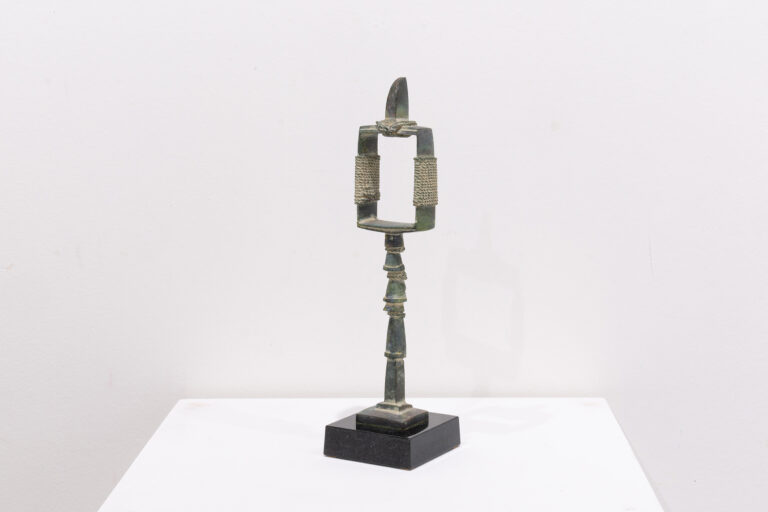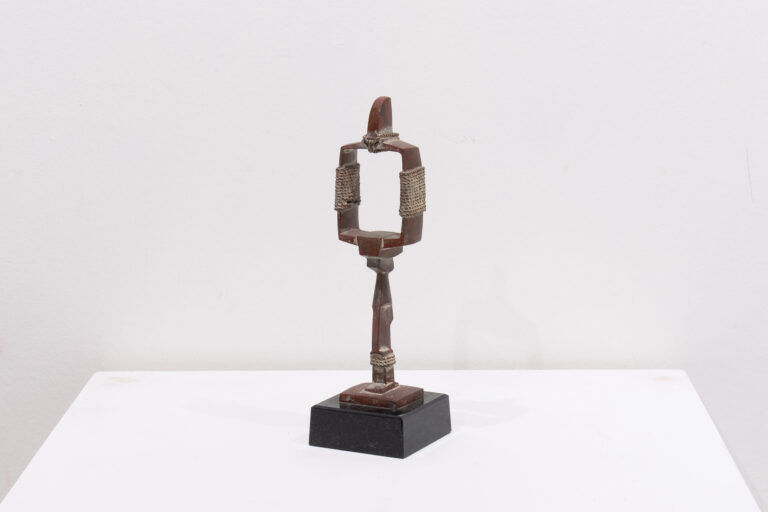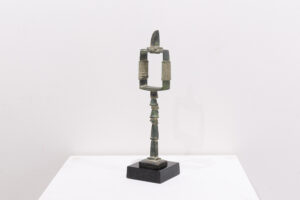
ART FAIR ASIA FUKUOKA 2024
2024.09.20 – 09.22
Masayuki Nagare has used the technique of “warehada” since early 1950s. It means that the work is unfinished by leaving the part where the stone is broken. “The uncreated things sometimes surpass the created ones, and the uncreated ones make the most of the created things. ”This expression is an unique aesthetic of his style, and later had a great impact on the United States.
In the 1960s, he had a great success in the United States and was recognized as an international sculptor. In 1963, he brought 600 tons of stone from Japan to the Japan Pavilion at the World Expo in New York and created a huge sculpture called “Stone Crazy”. In addition, he created a giant stone sculpture “Cloud Fortress” at the New York World Trade Center. (The “Cloud Fortress” was left unbroken during the terrorist attacks on September 11, but was dismantled as it hindered rescue operations.)
In the 1960s, Mrs. Rockefeller III purchased “Receiving” and it became a permanent collection of the Museum of Modern Art, MOMA, New York.
Many of his works are made of heavy stones, but they have been designed to make them look lighter, such as a shape that makes them appear to float unexpectedly. Each of his works have unique names that are related to his locals, and sculptures by Masayuki Nagare are widely known for their dignity in all parts of Japan and around the world.









